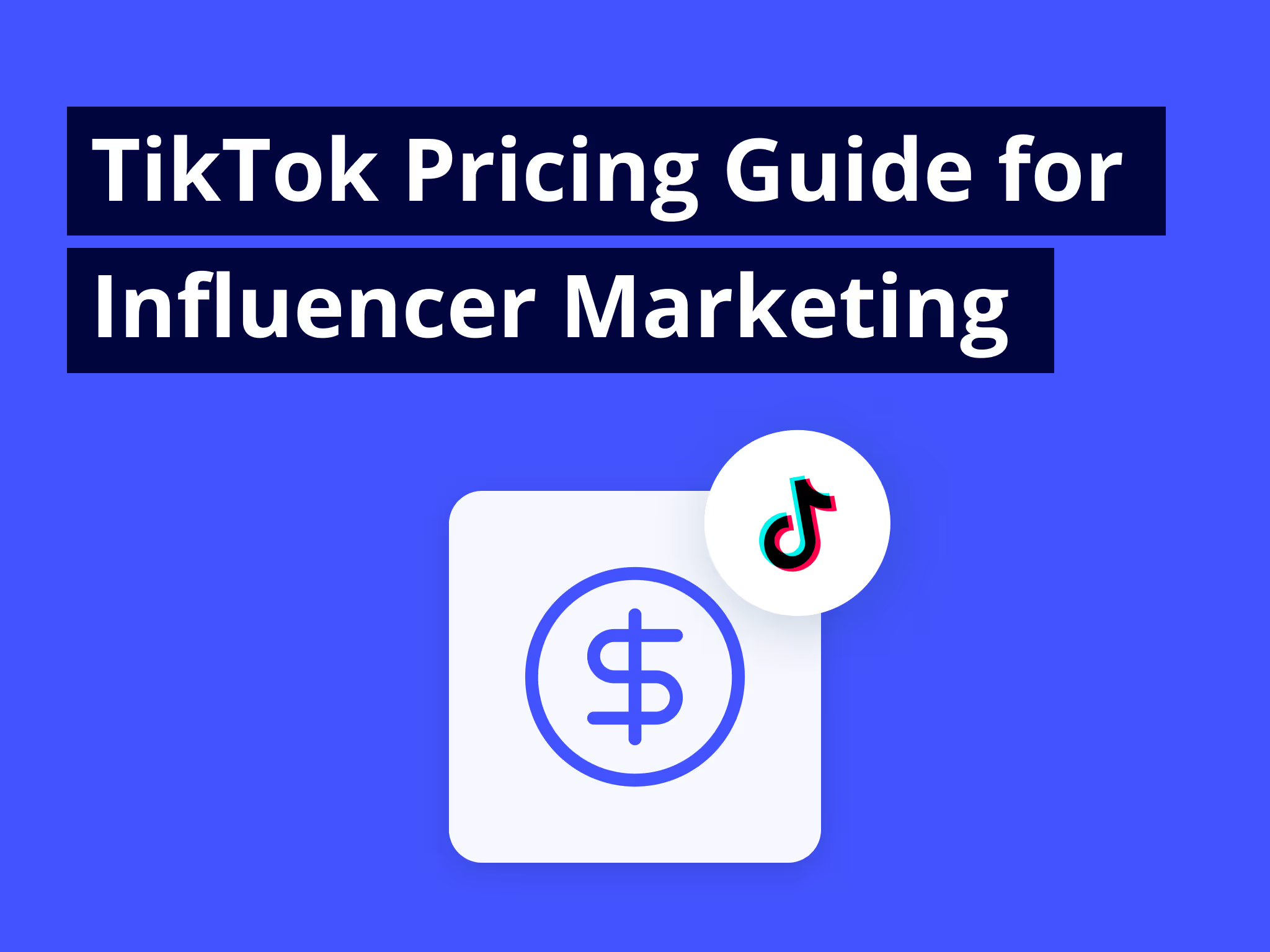You’re searching for specific, actionable guidance on TikTok influencer marketing, but every article is full of generic tips like Start by thinking about your marketing goals. 🤦♀️
Thankfully, you’re in the right place (at last). I spoke to a bunch of pro influencer marketers and grilled them on everything you need to know about running successful TikTok influencer campaigns, including how to:
👉 Set prices for TikTok influencer collabs
👉 Negotiate prices with TikTok influencers
👉 Prepare effective influencer briefs for TikTok
Here’s what the experts told me…
Pros and cons of TikTok influencer marketing
When selecting an influencer marketing platform for your campaign, you’re spoiled for choice. So why choose TikTok in the first place?
In terms of influencer marketing spending, it’s only the third most popular social network in the US:
🥈 YouTube
🥉 TikTok
What’s more, our influencer trends research revealed that Instagram far outperforms TikTok (and YouTube) when it comes to driving sales from influencer content:
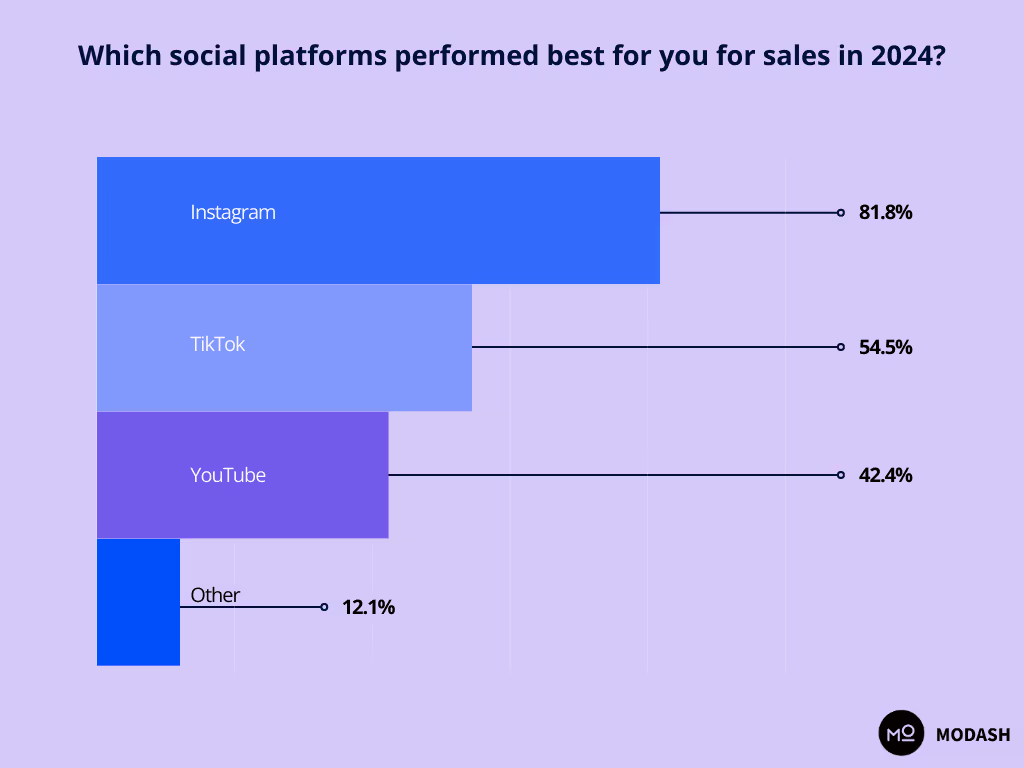
So TikTok isn’t the automatic best pick for every brand, in every scenario.
But is it the smart choice for your next campaign?
To help you answer that question, consider the main pros and cons of influencer marketing on TikTok:
Ultimately, the only way to know whether TikTok works for your campaign is to try it.
But first, you need to know what the platform’s deliverables are.
6 types of TikTok influencer deliverables
You probably already know that TikTok’s bread and butter is short-form video.
Although most TikTok videos are around 30 seconds long, some can be up to 10 minutes – or up to one hour when recorded externally and uploaded to TikTok.
Short-form video is very much the go-to content format for brands on TikTok. To show you an example, here’s a live collaboration between White Fox Boutique and fashion influencer Keira Smallwood:
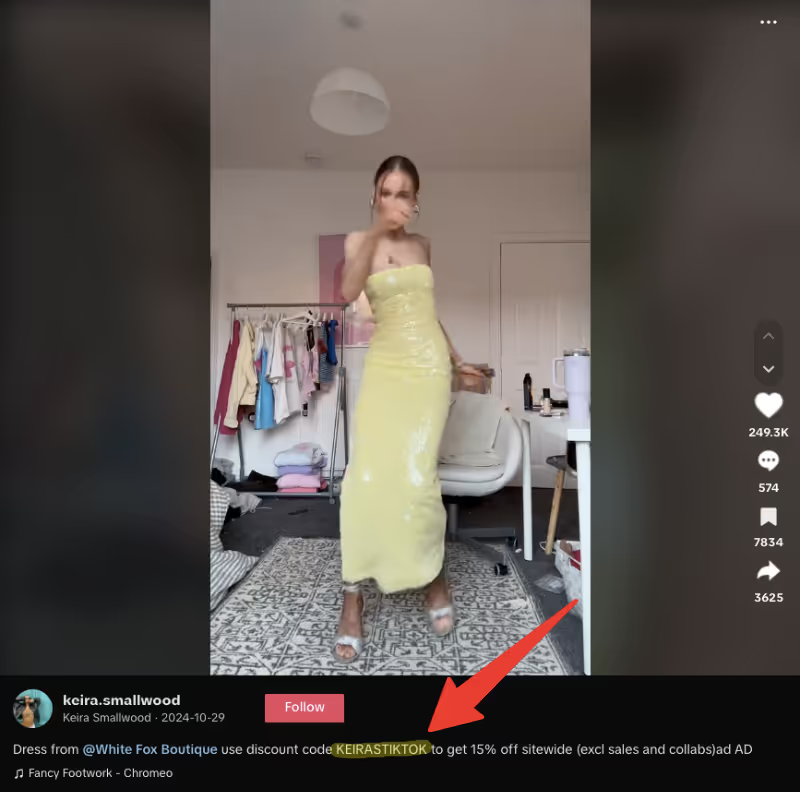
(Notice how Keira shared her discount code in the caption ☝️☝️☝️ With no way of adding clickable links, using a unique discount code is one of the few ways to track traffic and conversions through TikTok influencer campaigns.)
While TikTok is certainly best known for short-form video, it offers a handful of other formats too, including:
👉 Static content, like the classic in-feed post on Instagram.
👉 TikTok Live, in which influencers can stream live for up to an hour, allowing them to interact with viewers in real time – popular with brands and consumers in Asia-Pacific.
👉 Live shopping, in which brands showcase their products on an influencer-hosted live stream, allowing viewers to buy instantly, like this example from makeup brand Too Faced:
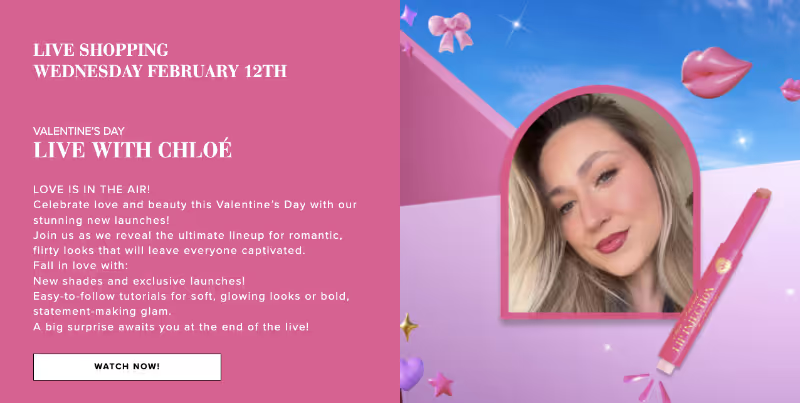
👉 TikTok Stories, which can be up to 15 seconds long and will disappear after 24 hours, just like their namesake on Instagram.
👉 TikTok Shop, which allows TikTok users to purchase products featured in videos and live streams without leaving the app (learn more in our complete guide on how to use TikTok Shop for influencer marketing).
Despite these content format options, for most Western brands and their consumers, short-form videos are the obvious choice.
Still, Andreea Moise notes that you should always dig into your ICP, market, and competitors before choosing your TikTok deliverables.
Once you’ve determined your strategy, it’s time to set your budget for those deliverables...
How to set influencer prices for TikTok collaborations
We know that TikTok collabs are mostly about short-form videos.
But how much should you pay for those videos?
Naturally, it depends on your brand and campaign goals. For instance, if you’re running a campaign with a target customer acquisition cost (CAC) of $100, this is your benchmark for the amount you have to spend on deliverables. If an influencer’s quote drives you above that $100 CAC, they’re not a good fit for your campaign.
The pricing of TikTok videos is also affected by factors specific to the influencer:
The most important factor affecting pricing is the average number of views an influencer generates, but you shouldn’t ignore those secondary factors. For instance, Andreea notes that you’d almost certainly pay higher CPMs for targeting audiences in the US than in Latin America.
Benchmark TikTok influencer prices
Given the sheer number of variables at play, it’s near impossible to come up with a meaningful benchmark for how much to pay TikTok influencers.
However, broadly speaking, Marit Tiesema recommends aiming for maximum CPMs of $20.
Meanwhile, I’ve put together some top-level benchmarks for TikTok videos and Instagram Reels, based on Modash’s own market intelligence covering influencers in North America:
Ultimately, your goals and budget will determine the types of TikTok influencers you want to work with – and this, in turn, will affect your pricing. But if this is your first time running a TikTok influencer campaign, the above figures should at least provide a starting point.
🤓 Further reading: The Influencer Marketer’s Guide to TikTok Pricing
How to negotiate with TikTok influencers
Once you find TikTok influencers for your campaign, the next step is to reach out and discuss pricing.
At this point, over half of marketers ask influencers to share their rates first.
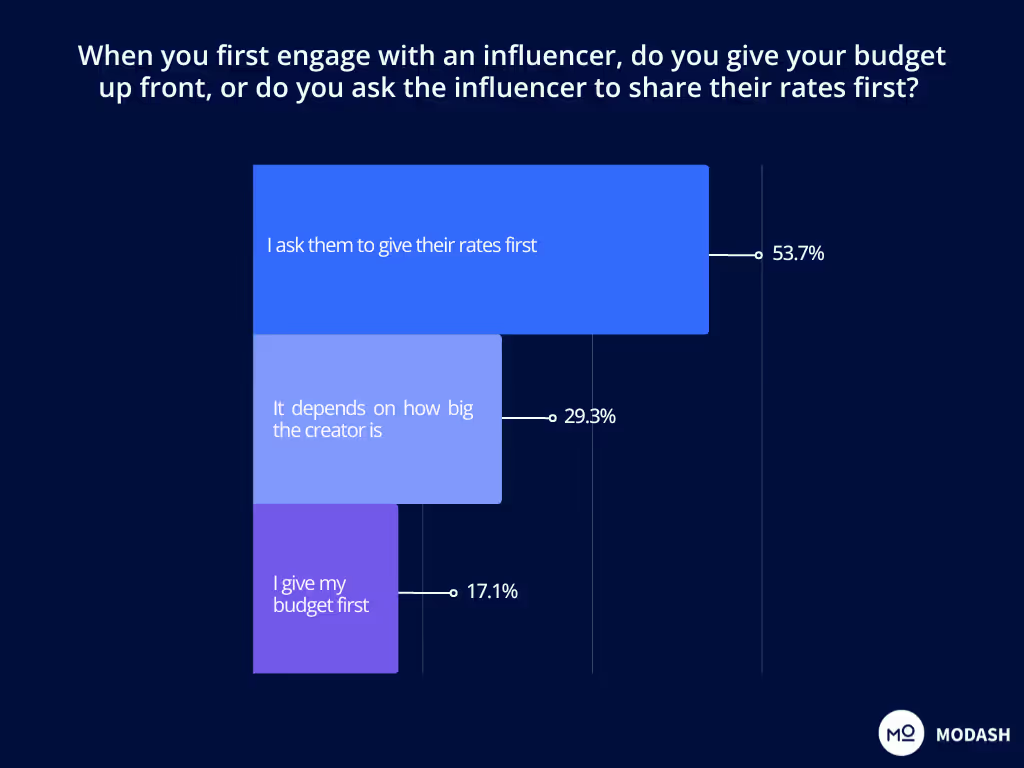
But whatever your approach, you’ll likely have to agree on a price (and a package of deliverables) that works for both you and your TikTok influencer partner.
Here are some TikTok-specific tips to make it happen…
Remove virality from the equation
The built-in virality of the TikTok algorithm means there’s always a chance a video will take off.
If that happens, great. But Marit insists you don’t base pricing decisions on the outside chance of going viral.
It all comes back to the importance of calculating an influencer’s average views before negotiating prices. Here’s how to do it:
👉 Look back over the influencer’s last ~12 videos
👉 Disregard their most-viewed video, and also the least
👉 Add up the total views and divide by the number of videos
Also, bear in mind that sponsored content typically gets fewer views than organic posts, so you might want to knock 5% – 10% off your average view calculation for a more realistic forecast.
Look at the ratio of “quality” engagements
Engagement rate is the #1 factor influencer marketers consider when deciding how much to pay an influencer.

But there’s a problem:
Some engagements are worth more than others. A lot more.
Ever seen a TikTok video with hundreds of comments – but most are single words or emojis? Technically, that’s a high rate of engagement, but those generic responses actually indicate a low quality engagement. Many of those commenters probably never even watched the video. On the other hand, if a video has lots of saves and shares, it’s a good indication that people saw it and genuinely liked it.
For this reason, Andreea recommends analyzing the ratio of high-quality engagements (shares and saves) to low-quality engagements (comments and likes).
Ask for additional rights/deliverables
Your influencer partner has shared their initial quote – and it’s out of budget.
Disaster, huh?
Not necessarily, because you can still try to negotiate a better deal by asking for additional rights or deliverables. For instance, you can:
👉 Request Instagram Story frames: Influencers can add clickable links to Stories – use this tactic to send traffic to your TikTok content or your site.
👉 Agree to a longer-term package: Negotiating a bundle of 3–4 TikTok videos spanning the next six months can help you secure a better rate than that of a one-off collaboration.
👉 Ask for content usage rights: If relevant, you can reduce your CPM and boost your ROAS by securing content usage rights for a limited period, e.g., 30 days. (I discuss this strategy in more detail later in this article.)
🤓 Further reading: I go deeper on negotiating with TikTok influencers in The Influencer Marketer’s Guide to TikTok Pricing. Or, for more general guidance, check out 9 Tips To Negotiate With Influencers (Without Being Unfair).
How to prepare influencer briefs for TikTok
You’ve found the perfect influencer(s) and negotiated a deal that suits everyone. Now it’s time to ensure that you’re all on the same page by sharing a quality brief.
Your TikTok influencer brief should contain the following sections:
👉 Information about your brand: Explain in 1–2 sentences what makes your brand unique (no rambling stories or marketing jargon, please!).
👉 Product information: Share why your influencer’s audience should buy your product. What problems does it solve? How does it fit into the user’s daily life?
👉 Campaign details: Spell out the basics of your campaign, including key messaging, hashtags, discount codes, ideas for storylines/hooks, and project timelines.
👉 Content inspiration: Create a slide in Canva showcasing live examples of high-quality TikTok content that fits your brief.
👉 Product use guidelines: If required, explain how to use your product correctly – this should reduce the need for reshoots down the line.
👉 Content dos and don’ts: Share a “snackable” roundup of rules and best practices, such as reminding influencers to add discount codes to their TikTok captions.
👉 Contact information: Finish by sharing a point of contact (including their name and contact details) to answer any follow-up questions.
🤓 Further reading: Learn more in our guide to influencer briefing for TikTok.
How to repurpose TikTok influencer content to amplify your ROI
One way to get a higher return from your TikTok content is to repurpose it for other channels.
That way, you’re not “just” getting a TikTok video – you’re also getting content to use in other marketing assets.
With that in mind, here are four ideas for repurposing your TikTok content:
Run Spark Ads
Influencer whitelisting ads – known as Spark Ads on TikTok – allow you to turn your influencer partner’s organic content into paid posts. That way, you can get more eyes on the influencer’s content.
Plus, unlike with organic TikTok content, you can add clickable CTA buttons and links to Spark Ads to drive direct traffic to your store.
Sounds awesome, right?
However, Marit Tiesema warns that not all influencer content translates to high-performing ads.
So if you’re going to pay an influencer for usage rights, you need to spell out exactly what you want from the organic content; otherwise you’ll be buying content that’s not optimal for your paid ads down the line.
Reshare TikToks as Reels/Shorts
Let’s be honest – TikTok videos, Instagram Reels, and YouTube Shorts are essentially the same content format across three different platforms. They even have the same:
👉 Dimensions: 1080 x 1920 pixels
👉 Aspect ratio: 9:16
So resharing TikTok content on Reels and Shorts is an easy win.
There’s just one small issue – Instagram actively “punishes” brands and influencers for sharing TikTok content on Reels. For instance, if your video has a visible TikTok logo, Instagram will limit its reach, so be sure to strip out that pesky watermark before reposting.
Add TikToks to your website
Did you know that 49% of consumers make daily, weekly, or monthly purchases because of influencer recommendations? Or that 87% of Gen Zers are more willing to buy from brands that partner with influencers beyond social media?
Whether you knew it or not, these stats demonstrate the value of influencer content in driving purchase decisions. So it makes sense for customers to see this content at the point when they’re ready to buy – that is, when they’re browsing your website. Notice how Loop Earplugs has a carousel full of influencer videos on its homepage:
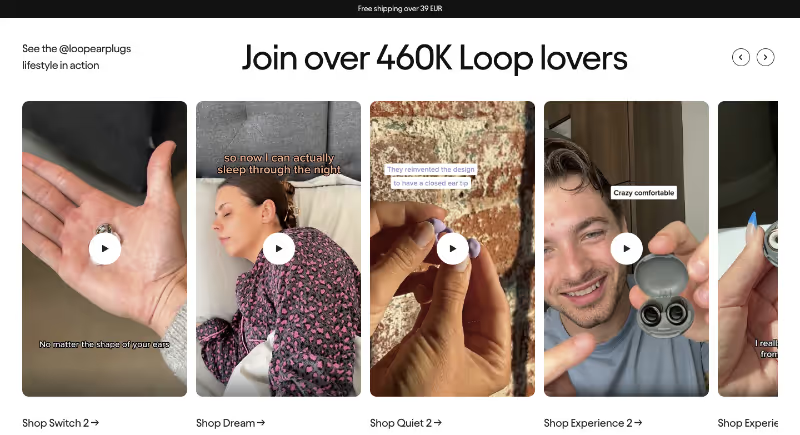
(For transparency, these are actually Reels, but you can do the same thing with TikTok videos)
🤓 Pro tip: Try adding influencer TikToks to product pages to build social proof and improve your conversion rate.
Use TikToks in email marketing
Another way to reuse your influencer-generated TikTok content is to add it to your marketing emails.
To be clear, I’m not suggesting actually embedding full videos in emails – that might cause deliverability and/or accessibility issues.
But you can definitely include screenshots of videos alongside the influencer’s clickable TikTok handle.
🤓 Further reading: Influencer Content Usage Rights: Here’s Everything You Need to Know
TikTok influencer marketing: a summary
As you can see, TikTok influencer marketing has a lot of moving parts, so here’s a step-by-step summary to keep you on track:
👉 Choose your TikTok campaign deliverables. Most of the time, this will be short-form videos, but you might also add on TikTok Stories, static posts, or live streaming.
👉 Use Modash to find TikTok influencers. Modash is an influencer marketing platform that features every influencer on Instagram, YouTube, and TikTok who has more than 1K followers (that’s 250M+ profiles in total!). Search based on median views, audience demographics, follower growth rate, and much more – then share a personalized influencer outreach message when you’ve found the perfect match.
👉 Negotiate a fair price, ideally based around your customer acquisition cost. If an influencer’s quote is out of budget, consider asking for extra deliverables or bundled usage rights.
👉 Share a high-quality brief. Talk through your brand, product, and the specifics of your campaign. And don’t forget to include examples of live TikToks you love – every influencer needs a little content inspiration now and then!
👉 Repurpose your TikTok content for other platforms and channels. Where relevant, ask for usage rights so you can share the influencer’s content on your website, in marketing emails, and in paid ads.
Then, when your first campaign is live, track influencer content and measure its impact to see which influencers, hooks, and content formats deliver the best results.
Ready to give TikTok a shot? Before you start your campaign, check out 11 TikTok Influencer Marketing Examples To Inspire Your Next Campaign!


.avif)


